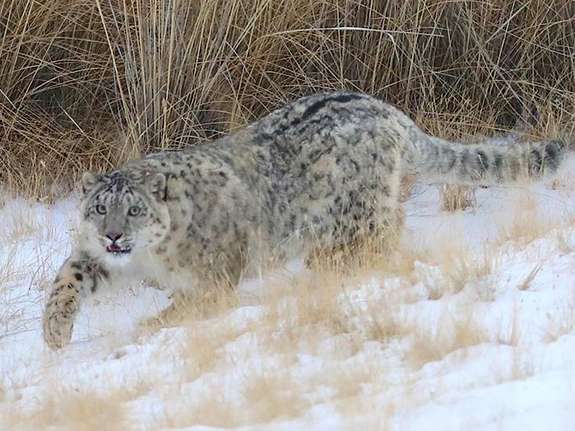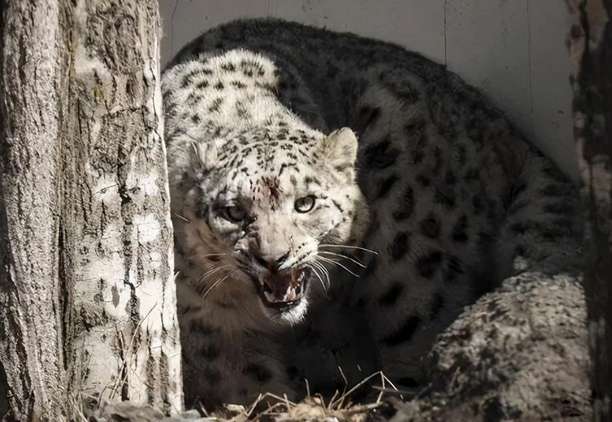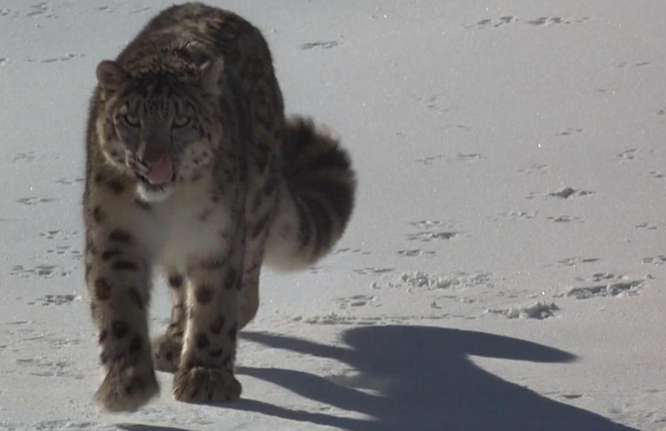Our country is a country with relatively rich cat species. Among the 40 species of cats in the world, 13 exist in our country, ranking among the best. As we all know, cats are a class of animals with relatively good looks. They generally have gorgeous fur, well-proportioned and strong figures, and are very beautiful.
If you ask, among the 13 species of cats in my country, which one has the best appearance? I believe many people’s answer will be Snow Leopard.

Snow leopards are members of the genus Leopard of the cat family, and belong to the same family. Animals include tigers, lions, leopards, etc. The base color of its hair is gray-white, covered with black markings. The hair is thick, fluffy and soft, making people want to "pet a cat" at the first sight.
In the past, the number of snow leopards was relatively large. It was a plateau species, mainly distributed in the Qinghai-Tibet Plateau and surrounding radiation areas, that is, in more than a dozen countries in Central Asia.
Because of its gorgeous fur and excellent thermal insulation properties, it has been hunted by humans in large numbers for a long time, resulting in a sharp decline in the population and its survival status was once endangered. Fortunately, people's awareness of animal protection has improved since then, and they have realized the importance of snow leopards to the plateau ecosystem. In addition, Central Asian countries have increasingly cracked down on poaching of snow leopards, and the living conditions of snow leopards have gradually improved.
There are about 7,500 snow leopards in the world today, and my country is the country with the largest distribution of snow leopards, with more than 60% living in our country.
The injured snow leopard broke into a house, with pitiful eyes as if asking for help
Many people can feel that the number of many wild animals has increased in recent years, including snow leopards , this can be felt from some wild animal-related sightings and encounters.
For example, the Siberian tiger was very rare in the early years. In recent years, people in Wangqing have encountered many of them while driving on mountain roads.
Snow leopards are a very mysterious cat. They deliberately avoid humans in their daily activities. However, as their numbers continue to increase, there are always some unexpected situations that cause them to walk down the snowy mountains. Entered the scope of human activities. For example, a snow leopard was recently discovered in the state-owned forest area in the eastern Tianshan Mountains of Xinjiang.

According to people's descriptions, A wild snow leopard first broke into a house and then wandered onto the road in the scenic area. Since snow leopards are large predators and are more dangerous, people did not dare to act rashly and finally reported it to the relevant departments.
After the police arrived, they found a big white cat in the grass on the roadside. It seemed to be in poor mental condition, relatively thin, and had obvious trauma on its left front leg.
p>
It was hiding in the grass on the side of the road, maybe because it was injured, or maybe it was panicked because it was in a strange environment. It had pitiful eyes and looked like it was asking for help. In view of this The situation was urgent, and the police subsequently captured it and sent it to the Wildlife Rescue Center for treatment.
The number of snow leopards has increased, and China has given a satisfactory answer
Snow leopards are known as "the animals on the snowy mountains" Elf", its main activity area is in the Qinghai-Tibet Plateau. For most animals, the high altitude and thin oxygen here are not conducive to long-term survival.
But this is not the case for snow leopards This is because during the long process of species evolution, they have evolved highly developed skills in regulating breathing and distributing blood. They are very sensitive to changes in oxygen and can adapt even in high-cold oxygen-thin environments.< /p>
At the same time, their bodies have also undergone some adaptive changes, such as their nasal cavities becoming larger and their hair becoming thicker.
As mentioned earlier, the population of snow leopards has increased over a long period of time. The domestic population has declined seriously, and was even on the verge of extinction. Fortunately, with people's vigorous protection, their endangered status was successfully reduced from "endangered" to "vulnerable". Our country's efforts are very important in this regard.
The largest distribution country of snow leopards is China, and more than 60% of snow leopards live in our country. Therefore, the protection of snow leopards in the world depends on China, and China has also given a satisfactory answer in this regard.
For the protection of snow leopards, China has taken multiple measures. On the one hand, it severely cracks down on poaching; on the other hand, it vigorously publicizes and educates the public about the law and strengthens people's awareness of animal protection; at the same time, it establishes protected areas to protect the native habitat of snow leopards.
After a series of protection measures, although the snow leopard is generally showing a downward trend around the world, it is an upward trend in our country.
Climate change is affecting snow leopards and has brought strong opponents
p>
At present, for wild snow leopards, although poaching and the impact of some livestock and other factors still exist, these are not the biggest factors affecting the survival of snow leopards. Their real threat has become the climate Changes.
The plateau snow mountain ecosystem is relatively fragile, and as the flagship species of the plateau snow mountain ecosystem, snow leopards are more affected by the environment. The greenhouse effect causes global temperatures to rise., in the past 20 years or so, the temperature on the Tibetan Plateau has increased by at least 3 degrees Celsius.

Some scientists in the United States used computers to build In the form of a model, it simulates the changing status of the snow leopard's habitat under different historical climate environments. It is estimated that by 2070, as global temperatures rise, approximately 65% of the snow leopard's habitat will disappear. The Altai Mountains, Qilian Mountains, The areas extending from the Tianshan Mountains to the Kunlun Mountains will be the last places for snow leopards to survive.
Climate change not only affects the habitat of snow leopards, but also brings them a strong opponent, and this opponent is the famous golden leopard.
Originally, snow leopards live in high-altitude areas above the tree line, and golden leopards live in low-altitude areas below the tree line. The two do not disturb each other. But climate change has changed this situation, causing the two to overlap in their scope of activities.
This is not alarmist. In fact, there are already signs. For example, people have photographed snow leopards and golden leopards in the same location in Sanjiangyuan, Nujiang River Valley, Yushu Prefecture in Qinghai and other places.
Although snow leopards and golden leopards are both large cats of the genus Leopard, the snow leopard is inferior to the golden leopard in terms of size and strength. After all, in the forest environment of our country, the golden leopard is second only to the tiger." "Two Kings". Once there is a serious competitive relationship between the two in the environment, the snow leopard will become the weak one and be squeezed out by the dominant species, the golden leopard.
But for now, there is no need to worry too much. After all, the areas where they can meet are on the edge of their habitats, not the main activity areas. But these signals have sounded the alarm to people that climate change is affecting the survival of snow leopards.